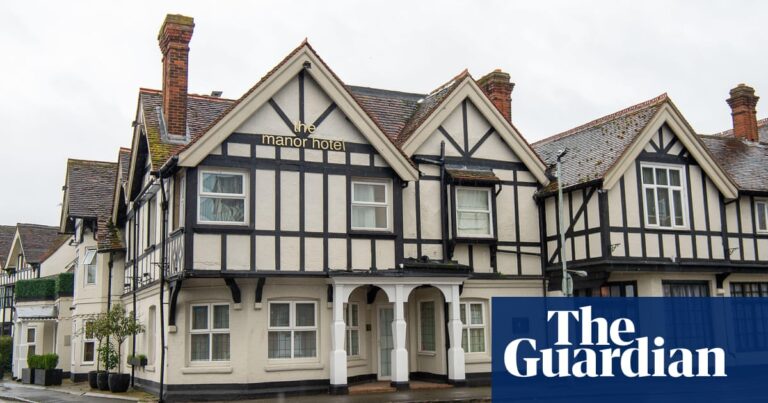At least several hundred people are feared to have been killed after the worst cyclone in almost a century ripped through the French Indian Ocean territory of Mayotte on Saturday, uprooting trees, tearing houses apart and pounding the impoverished archipelago’s already weak infrastructure.
Rescuers have been dispatched to the islands, which lie between the coast of Mozambique and Madagascar, but their efforts are likely to be hindered by damage to airports and electricity distribution in an area where clean drinking water is subject to chronic shortages.
Speaking to Mayotte’s la 1ere TV station on Sunday, the archipelago’s prefect, François-Xavier Bieuville, said the confirmed toll of 11 dead was likely to soar over the coming days.
“I think there will certainly be several hundreds, maybe we will reach a thousand, even several thousands,” he said.
Bieuville said it would be very difficult to reach a final count given that most residents were Muslim and so traditionally would bury their dead within 24 hours.

Establishing an accurate toll will be doubly difficult given that France’s interior ministry estimates about 100,000 people live clandestinely on Mayotte.
Some of them did not dare to venture out and seek assistance, “fearing it would be a trap” designed to remove them from Mayotte,” said Ousseni Balahachi, a former nurse.
The mayor of Mayotte’s capital of Mamoudzou, Ambdilwahedou Soumaila, had earlier told Agence France-Presse that nine people had been seriously injured when Cyclone Chido hit and were fighting for their lives in hospital, while 246 more were badly hurt.
“The hospital is hit, the schools are hit. Houses are totally devastated,” he said, adding that the cyclone had “spared nothing”.
One local resident, Ibrahim, told AFP of “apocalyptic scenes” as he made his way through the main island, having to clear blocked roads for himself.
Mayotte’s 320,000 residents had been ordered into lockdown on Saturday as Chido bore down on the islands, bringing winds of at least 226 kilometres an hour (140mph).
Aerial footage shared by French gendarmerie forces showed the wreckage of hundreds of makeshift houses strewn across the hills of one of Mayotte’s islands, which have been a focal point for illegal immigration from nearby Comoros.
France’s interior minister, Bruno Retailleau, would travel to Mayotte on Monday, his office said, alongside 160 soldiers and firefighters who will join the 110 personnel already deployed to the islands.

Authorities in Réunion, another French Indian Ocean territory about 1,400 kilometres away on the other side of Madagascar, said medical personnel and equipment were on the way by air and sea.
A first aid plane landed in Mayotte at about 3:30pm local time on Sunday with three tonnes of medical supplies and blood for transfusions and 17 medical staff. Two military aircraft were expected to follow.
A navy patrol ship was also to depart Réunion with personnel and equipment, including for the electricity supplier EDF.
The prefect of Réunion, Patrice Latron, said authorities aimed to establish an air and sea bridge to Mayotte. About 800 more rescuers were to be sent in the coming days and more than 80 tonnes of supplies had been flown in or were on their way by ship. Priorities included restoring electricity and access to drinking water, he said.
Mayotte is France’s poorest island and the EU’s poorest territory. In some parts, entire neighbourhoods of metal shacks and huts were flattened, while residents reported many trees had been uprooted, boats flipped or sunk and the electricity supply knocked out.
EU chief Ursula von der Leyen and French President Emmanuel Macron on Sunday pledged help.
Chido also battered the nearby islands of Comoros and Madagascar. Authorities in Comoros said 11 fishers who had gone out to sea earlier this week were missing.
The intense tropical cyclone, which made landfall in Mozambique on Sunday, could affect 2.5 million people in the north of the country as aid agencies warn of more loss of life and severe damage.
A Unicef spokesperson confirmed that Cabo Delgado, Mozambique’s northernmost province, which is home to about 2 million people, had been hit, and that many homes, schools and health facilities there had been partly or completely destroyed. The death toll so far stood at three, according to local officials.
Cyclone season in the region runs from December to March, and parts of the south-eastern Indian Ocean and southern Africa have been hit by a series of strong ones in recent years. Cyclone Idai killed more than 1,300 people in Mozambique, Malawi and Zimbabwe in 2019. Cyclone Freddy left more than 1,000 dead across several countries last year.
The cyclones bring the risk of flooding and landslides, but also stagnant pools of water that may later cause deadly outbreaks of cholera, dengue fever and malaria.
Studies say the cyclones are getting worse because of the climate emergency. They can cause large humanitarian crises in poor countries in southern Africa, which contribute a tiny amount to global heating, underlining their call for more help from rich nations to deal with the impacts of climate change.
Associated Press and Agence France-Presse contributed to this report
Source: theguardian.com
















